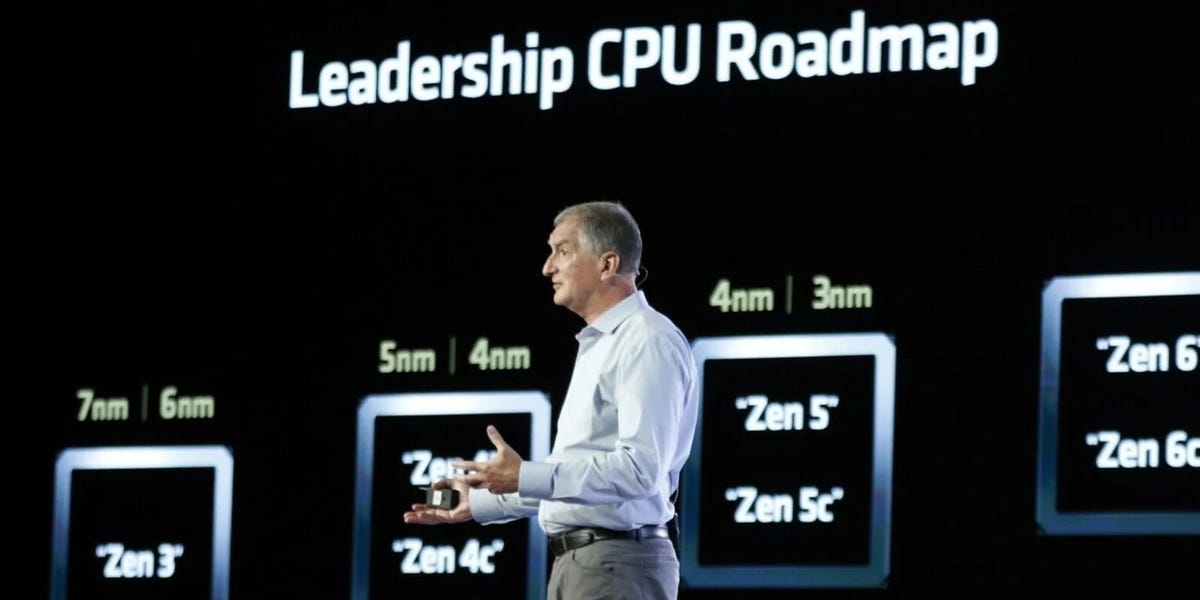AMD Explores New Possibilities as AI Workloads Shift to Inference

The Shift in AI Workloads: From Training to Inference
Understanding AI Workloads
Artificial intelligence (AI) has drastically evolved over the years, with workloads shifting from training to inference. Training workloads are essential for developing large language models, endowing them with the ability to communicate and generate human-like text. In contrast, inference refers to the computational processes involved when AI systems produce outputs, such as answering inquiries or creating visual content.
Recent reports suggest that as of last year, inference has become the dominant facet of accelerated computing. This shift has opened up a new competitive landscape, particularly benefitting companies like AMD, which are looking to gain market share from established players like Nvidia.
AMD’s Position in the AI Market
AMD’s Chief Technology Officer, Mark Papermaster, highlights that this transition towards inference represents a considerable opportunity for the company. Over the years, AMD has been perceived as playing catch-up in the data center arena due to Nvidia’s early dominance. However, the edge computing segment is much more accessible, allowing AMD to innovate and fill market gaps.
AMD’s CEO, Lisa Su, notes that the company has positioned itself favorably for this change. "People are appreciating what we’ve accomplished in inference," she shared during an earnings call, indicating a positive reception to their developments.
Future of AI in Edge Devices
Current Use Cases of AI
One impactful application of AI in edge devices like laptops and smartphones is real-time, localized content creation. For example, during a Microsoft Teams call, AI can adjust the camera view to ensure participants are centrally framed. This illustrates how AI can greatly enhance communication experiences.
Another practical application involves automatic translation. Imagine having a seamless conversation with someone who speaks a different language, thanks to AI technology delivering instant translations in real-time. These developments are expected to be rolled out imminently by firms like Microsoft.
Furthermore, AI is playing a crucial role in autonomous operations that extend beyond just vehicles. This technology is paving the way for intelligent factories where machinery and processes are automated, leading to improved efficiency.
The Inference Landscape in 2030
Looking toward 2030, Papermaster predicts that the majority of AI inference tasks will occur at the edge, although the timeline for this transition largely depends on the emergence of innovative applications that can run effectively on local devices.
Historically, smartphones served merely as communication tools until platforms like the App Store enabled a wave of application development. Similarly, the development of "killer apps" that can leverage AI on edge devices will accelerate this shift. Papermaster expects to see significant changes within the next three to six years.
Continuous Improvements in AI Models
The landscape of AI technology is marked by an ongoing pursuit for better capabilities and accuracy. As AI models become more sophisticated, there are two notable trends: increased computing demand and optimizations for efficiency.
While some innovations may require more computational power, others will focus on making existing systems more efficient. High-profile companies such as Microsoft, Meta, and Google are investing in advances that both enhance capabilities and improve accuracy.
The growth in AI capabilities doesn’t imply that current technologies will become obsolete; instead, they will continuously evolve, ensuring that users can benefit from both new and existing features throughout this transformation.
The Road Ahead
The increasing relevance of inference, particularly in edge computing, positions AMD and similar companies to meet the demands of the software and hardware markets. With AI systems becoming more localized and efficient, the future ahead promises to change how users interact with technology daily, unlocking new possibilities in communication, content creation, and beyond.






